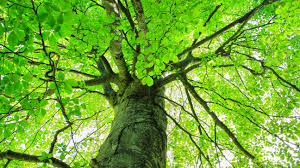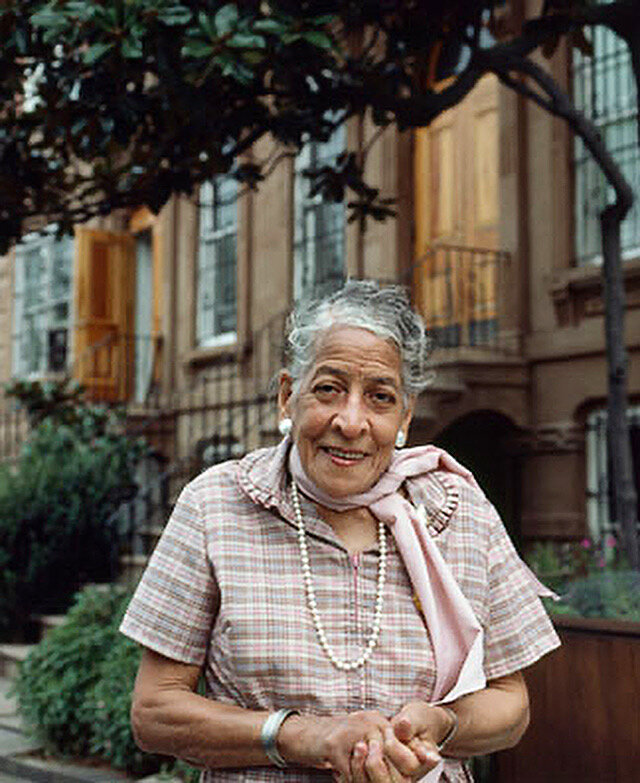On a smoking-hot summer day in Toronto, the cabbies hang out at the gritty East York Town Centre’s parking lot in Toronto’s Thorncliffe Park neighbourhood. They know where to stay cool — they’ve found a few small strips of cooling shade from the few trees planted in the mall’s vast concrete parking area.
The cabbies banter, have a smoke, and eat a brown-bag lunch. It feels livable here in the shade, on a scorching day when most folks are trying to stay inside and crank up the AC. Like a little oasis.
One steamy summer day in July, I decided to walk about 7 kilometers from our home in leafy Riverdale to my community garden at Thorncliffe Park. The heat kicked up across the O’Connor viaduct bridge. As I got across the valley bridge and turned into the Thorncliffe neighbourhood, my eyes scouted ahead to find the best shade. I instinctively adjusted my route to stick to the shady spots. I stopped once to take out my hearing devices, toweled down my sweaty head, and tromped on.
Next to the community sports field and playground, there was some great shade from mature trees. But as I got closer to the Thorncliffe mall, the task of finding shade was trickier. Trees were fewer, smaller, and sicker. I clung to some shade along the brick wall of the elementary school, then made a beeline across the heat blanket of the mall’s parking lot for a cluster of trees next to the Quick Lube oil change shop.
In this vast parking area, thousands have people have stood in a snaking line this year waiting for their covid vaccines — sandwiched between a hot sun, and the heat reflecting off the concrete.
On the hottest summer day in Toronto in 2021, the temperature can top 36 degrees Celsius. But with climate changes underway, that peak is expected to edge well over 40 degrees by mid-century.
Middle income or wealthy neighborhoods have more cooling shade — their tree canopy is older and better maintained. Lower-income neighborhoods like Thorncliffe Park are hotter. It’s tougher to find the shady, liveable spaces on a hot day — the places that cool our bodies and ease our minds. In addition, wealthier neighbourhoods have better air-conditioning, and those AC systems pump hot air outside, increasing the temperatures for those coping with no AC.
It’s a small step, but we need more trees in Thorncliffe Park, I thought.
As I returned to guerrilla gardening this summer, I got some inspiration on the topic of guerrilla tree planting as one way to keep our city liveable in the years ahead. The first story came from my fellow community gardener Debi Rudoph. In the space of about 15 years, a small maple tree she planted clandestinely at a local grocery store now shaded a public sidewalk nearby. It created gorgeous colour in the fall.
The second inspiration was a video shared by my brother-in-law Darcy McGovern. It tells the tale of guerrilla gardening efforts in New York City. One of the most inspiring was the story of Hattie Carthan. She had witnessed her beloved Bedford-Stuyvesant neighborhood in Brooklyn slowly fall into disrepair. As its black population increased, mortgage lenders used the discriminatory practice of “red-lining” to deny loans to residents. Homes fell into disrepair, as did city streets, sidewalks and infrastructure.
One of the saddest declines was in the neighborhood’s tree canopy, as older trees were not maintained or replaced. With a fierce determination, Hattie became an activist. She formed a local Tree Corps. The group not only saved some existing trees, including an ancient and magnificent Magnolia, but over the course of years planted and maintained more than 1,500 new trees in public areas of their neighborhood.
The Tree Corps. engaged people of all ages to understand and nurture their tree canopy. Slowly, they brought back some beauty, pride, and cooling shade to their beloved “Bed-Stuy”.
As I wandered through the central section of Thorncliffe Park — the mall, school and park that are its lifeblood — I imagined how more trees could enrich this community.
My first thought was selfish — I could plant trees along my own walking route, to keep me cooler in the summers ahead. But I also thought about the thousands of people getting around on foot in Thorncliffe Park on a hot summer day. Coming through the park walkway to the mall. Taking the sidewalks to catch a bus, often in the scorching heat of the sun. Waiting for the bus with no shade in sight, like I have done many times.
I thought about community engagement in Thorncliffe through its Neighborhood Office, community gardens and businesses. And about the immense goodwill of its people.
I imagined a tiny band of willing guerrilla gardeners who would form the first-ever Thorncliffe Park Tree Corps.



